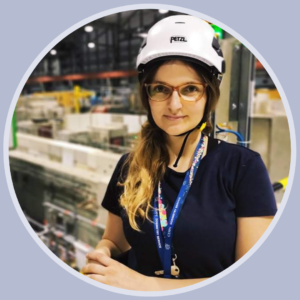I WAS HERE
CERN – Geneva (Swiss-French border)
We are curious of the world. We like to boast about it. And we like to leave a trace: I WAS HERE is what we write in different places around the world, or take photos there, which is less invasive for the landscape.
We also were! Where? Enjoy reading the scientific travel series.
CERN one year later
‘When I got my Master’s degree in sociology, I told myself, ‘Marta, it’s time to settle down, get a job, a house, a family, a cat, water your flowers on a regular basis…’ As it usually is with me, I did quite the opposite and decided to study physics,’ the doctoral student Marta Urbaniak wrote one year ago. Back then, she was still before her first working day at CERN, and she couldn’t wait to go there. What are her post-CERN impressions?
Speed close to the speed of light, over 20 detectors, over 200 people from all over the world conducting analyses and building the detection system, studying the production of strangeness and open charm, studies on the state of matter where quarks are spontaneously released; to see it all and work in the hall where it all takes place is really impressive.
I joined the NA61/SHINE experiment carried out at CERN during my first year of studies at the Doctoral School of the University of Silesia. It was my dream to come to the place where the studies are happening and which I’d heard so much about from my fellow team members. The dream came true pretty quickly, as soon as the second year of my studies.
One of the main goals of the experiment was to examine the state of matter which was present at the initial stage of the universe existence: quark-gluon plasma. This is an example of an exceptional state when quarks and gluons move freely, which is absent under normal conditions. Thanks to CERN infrastructure, we are able to create such conditions in our experiment, whereas the precise measurement system helps us search for phase transition signals. One of such observables is changes in the production of particles that contain strange and/or charm quarks.
The experiment also involves unique measurements allowing for a more precise measurement in experiments examining the oscillations of neutrinos and studies necessary for the development of galactic cosmic-ray (GCR) propagation models.
This last theme is particularly important for me, because it is related to the subject of my PhD thesis. A very important element of galactic cosmic-ray (GCR) propagation models is the values of cross sections per the process of fragmentation (division) of light and medium-weight atomic nuclei during collision with intergalactic matter, which we measure in our experiment. The development of models and measurements of cosmic ray streaming in such experiments as AMS or PAMELA allows us to find a response to the following questions: what physical processes accelerate particles to such high energy? What physical conditions are present in the objects of particle acceleration? To conduct all these measurements, we need three main elements:
- accelerated proton beam or heavy ion (even lead) beam,
- screen that the beam strikes against,
- large amount of precise detectors to measure the products of such reactions,
- and, of course, a high number of people 🙂
The modernisation of detection system I was able to participate in is currently about to end. In bigger experiments, as I found out from the friends of mine, some doctoral students do not even get the opportunity to see the detectors with their own eyes, whereas I had a chance to lie on one of them 😉 I could learn how to launch the measurements, how to control the beam and what overconducting dipolar magnets look like look like; it is thanks to them that a beam goes in the right direction and ultimately hits the screen. I took part in tests of detectors and replacement of the electronics of their reading, thanks to which I realised how many components are required to be able to read data from one detector and how much knowledge is needed to make it all work.
And all of this happens while you are surrounded by the admirable Alps and charming Swiss towns. After work you can go to Lake Geneva, hike in the mountains or have a barbecue, though we keep talking about work, because physics is basically all we have in our minds 😉
Text and photos: Marta Urbaniak







